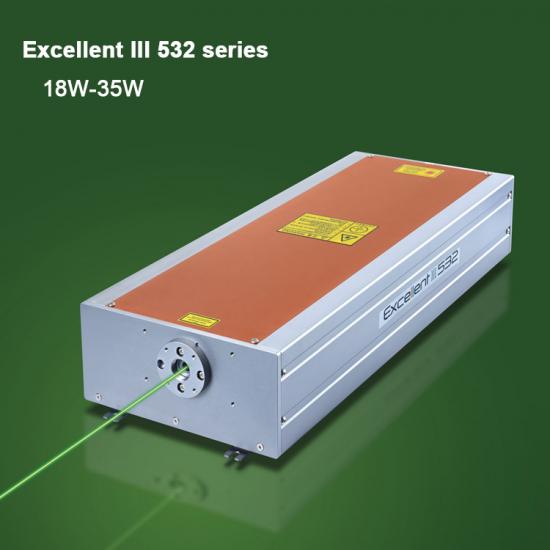그린 레이저 빔 절단기의 다양한 절단 방법
Aug 16 , 2021Laser cutting is a non-contact processing method with high energy and good density controllability. The laser beam is focused to form a light spot with high energy density, which has many characteristics when applied to cutting. There are mainly four different cutting methods for laser cutting to cope with different situations.
In laser melting and cutting, the workpiece is partially melted and the molten material is sprayed out with the help of airflow. Because the transfer of the material only occurs in its liquid state, the process is called laser melting and cutting.
The laser beam is matched with a high-purity inert cutting gas to drive the melted material away from the kerf, and the gas itself does not participate in the cutting. Laser melting cutting can get a higher cutting speed than gasification cutting. The energy required for gasification is usually higher than the energy required to melt the material. In laser melting and cutting, the laser beam is only partially absorbed. The maximum cutting speed increases with the increase of the laser power, and decreases almost inversely with the increase of the thickness of the sheet and the increase of the melting temperature of the material. In the case of a certain laser power, the limiting factor is the air pressure at the slit and the thermal conductivity of the material. Laser melting and cutting can obtain oxidation-free incisions for iron materials and titanium metals. The laser power density that produces melting but not gasification is between 104W/cm2 and 105W/cm2 for steel materials.

uv laser | green laser | Ultraviolet lasers | uv dpss laser | nanosecond laser | UV laser source | Solid State Lasers
In the laser gasification cutting process, the speed of the material surface temperature rising to the boiling point temperature is so fast that it is enough to avoid melting caused by heat conduction, so part of the material vaporizes into steam and disappears, and part of the material is sprayed from the bottom of the slit by auxiliary gas The flow blows away. In this case, very high laser power is required.
In order to prevent material vapor from condensing on the slit wall, the thickness of the material must not greatly exceed the diameter of the laser beam. This process is therefore only suitable for applications where the removal of molten material must be avoided.
이 처리는 실제로 철 기반 합금이 매우 작은 영역에서만 사용됩니다. 이 프로세스는 용융 상태가 아니므로 재료 증기가 재응축될 가능성이 없는 목재 및 특정 세라믹과 같은 재료에는 사용할 수 없습니다. 또한 이러한 재료는 일반적으로 더 두꺼운 절단이 필요합니다. 레이저 가스화 절단에서 최적의 빔 초점은 재료 두께와 빔 품질에 따라 다릅니다. 레이저 출력과 기화열은 최적의 초점 위치에 일정한 영향을 미칩니다. 시트의 특정 두께의 경우 최대 절단 속도는 재료의 기화 온도에 반비례합니다. 필요한 레이저 출력 밀도는 108W/cm2보다 크며 재료, 절단 깊이 및 빔 초점 위치에 따라 다릅니다. 일정한 판두께의 경우,
열에 쉽게 손상되는 취성 재료의 경우 레이저 빔 가열에 의해 고속 및 제어 가능한 절단이 수행되며 이를 제어 파단 절단이라고 합니다. 이 절단 공정의 주요 내용은 다음과 같습니다. 레이저 빔이 취성 재료의 작은 영역을 가열하여 이 영역에서 큰 열 구배와 심각한 기계적 변형을 일으켜 재료에 균열이 형성됩니다. 균일한 가열 구배가 유지되는 한 레이저 빔은 균열을 원하는 방향으로 유도할 수 있습니다.
용융 절단은 일반적으로 불활성 가스를 사용합니다. 산소 또는 기타 활성 가스로 대체되면 레이저 빔의 조사하에 재료가 점화되고 산소와 격렬한 화학 반응이 일어나 다른 열원을 생성하여 재료를 더 가열합니다. 이를 산화 용융 절단이라고합니다.
이 효과로 인해 동일한 두께의 구조용 강재에 대해 이 방법으로 얻을 수 있는 절단 속도는 용융 절단보다 높습니다. 반면에 이 방법은 융합 절단에 비해 절단 품질이 더 나쁠 수 있습니다. 실제로 커프가 더 넓어지고 표면이 거칠어지며 열 영향을 받는 영역이 증가하고 가장자리 품질이 나빠집니다. 레이저 화염 절단은 정밀 모형 및 날카로운 모서리를 가공할 때 좋지 않습니다(날카로운 모서리가 타버릴 위험이 있습니다). 펄스 레이저를 사용하여 열 영향을 제한할 수 있으며 레이저의 출력이 절단 속도를 결정합니다. 특정 레이저 출력의 경우 제한 요소는 산소 공급과 재료의 열전도도입니다.